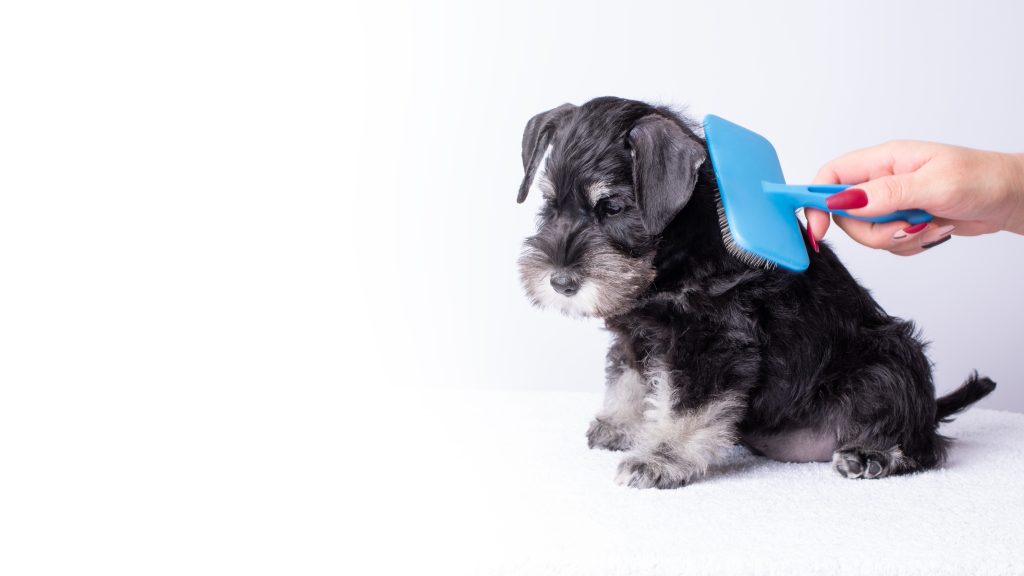Grooming your puppy’s coat is an important part of their care, not just for cleanliness but also for their health and comfort. Regular brushing helps to prevent mats, distribute natural oils, and strengthen your bond with your new pet.

Why brushing is important for puppy coats
Brushing your puppy’s coat from a young age is about more than just maintaining a tangle-free look. It’s a key part of their development. Regular brushing stimulates the skin and helps to distribute natural oils, which promotes a shiny, healthy coat. More importantly, it helps your puppy get used to being handled, making future grooming sessions and vet visits much less stressful.
Types of brushes for different puppy breeds
Choosing the right brush depends on your puppy’s coat type. Here are some gentle and effective options:
- For Short-Haired Breeds (Beagles, Pugs): A bristle brush with natural or synthetic bristles is perfect. It’s gentle on their skin and helps to remove loose hair and dirt, giving their coat a healthy shine.
- For Long-Haired or Curly-Haired Breeds (Golden Retrievers, Poodles): A pin brush with rounded pins is ideal. It helps to detangle and remove mats without pulling on their skin. A slicker brush can also be used, but you should be extra gentle as the fine wires can be rough on sensitive puppy skin.
- For All-Purpose Brushing: A grooming mitt or glove is a great option, especially for puppies that are hesitant about traditional brushes. The soft rubber nubs mimic the feel of a massage, making it a very positive experience.
How often should you brush your puppy?
The frequency of brushing depends on your puppy’s breed. For long-haired breeds, a daily brushing session is recommended to prevent mats. For short-haired breeds, two to three times a week is often sufficient. The key is consistency; even a few minutes each day can make a big difference.
Tips for making brushing a positive experience
Making brushing a fun and rewarding activity is essential for a puppy.
- Keep it short: Start with very short sessions, just a minute or two, to build their tolerance.
- Use treats: Reward your puppy with their favorite treats throughout the session.
- Be gentle: Always use a gentle hand and avoid pulling on tangles.
- Use a verbal cue: Say a phrase like “time to brush” so your puppy learns to associate the words with the activity.
When to switch to adult dog brushes
You can switch to an adult brush as your puppy’s coat matures, which usually happens between 6 to 12 months of age. Pay attention to changes in their coat texture and thickness. As their puppy fur is replaced with their adult coat, you may need a more robust brush to handle it effectively. If you’re unsure, ask your vet or a professional groomer for advice.
We hope these tips help you and your puppy enjoy grooming time together. Do you have any questions about puppy nutrition or training?



